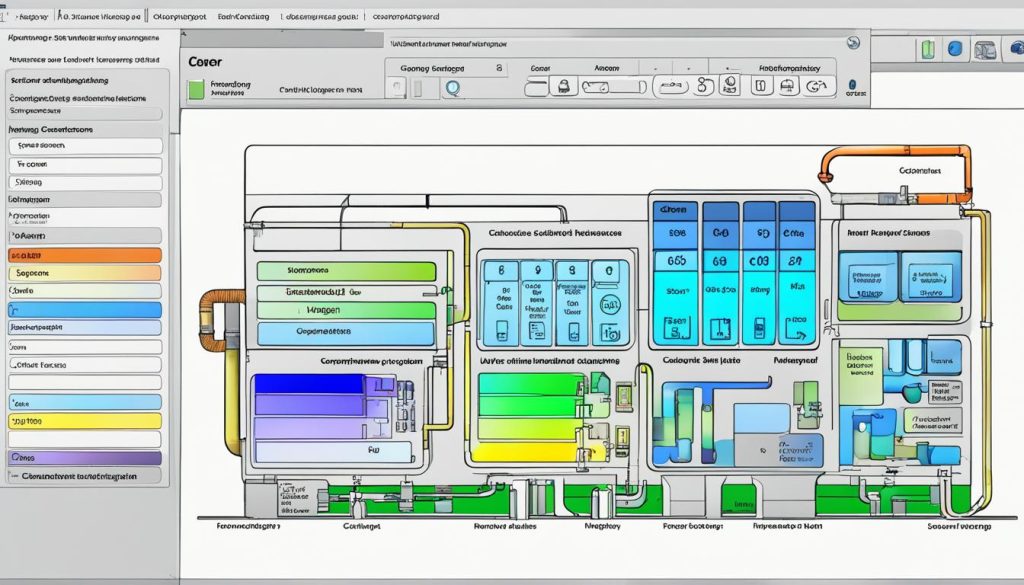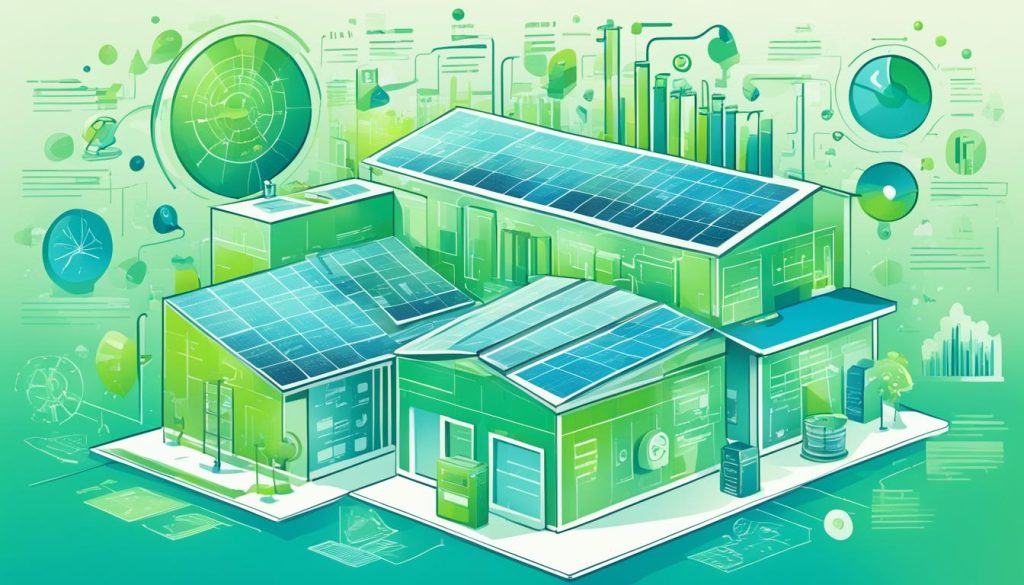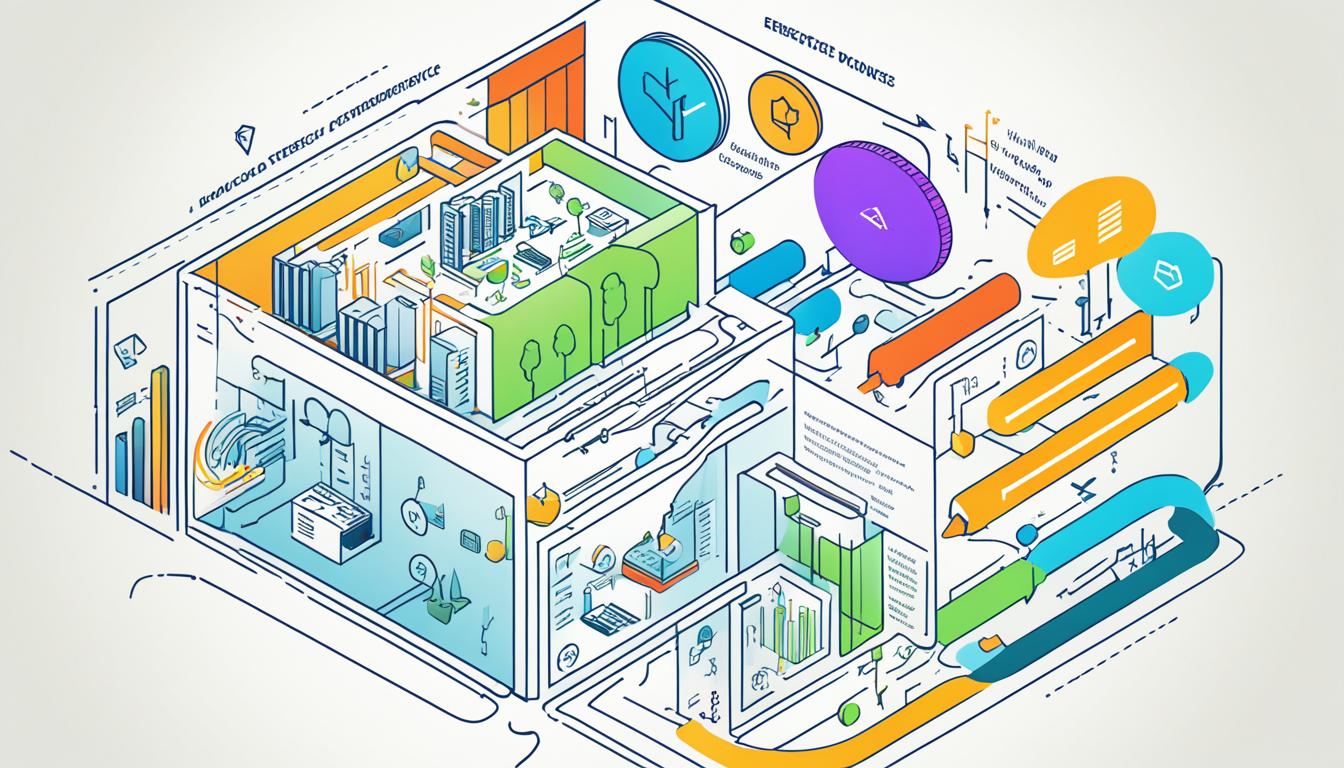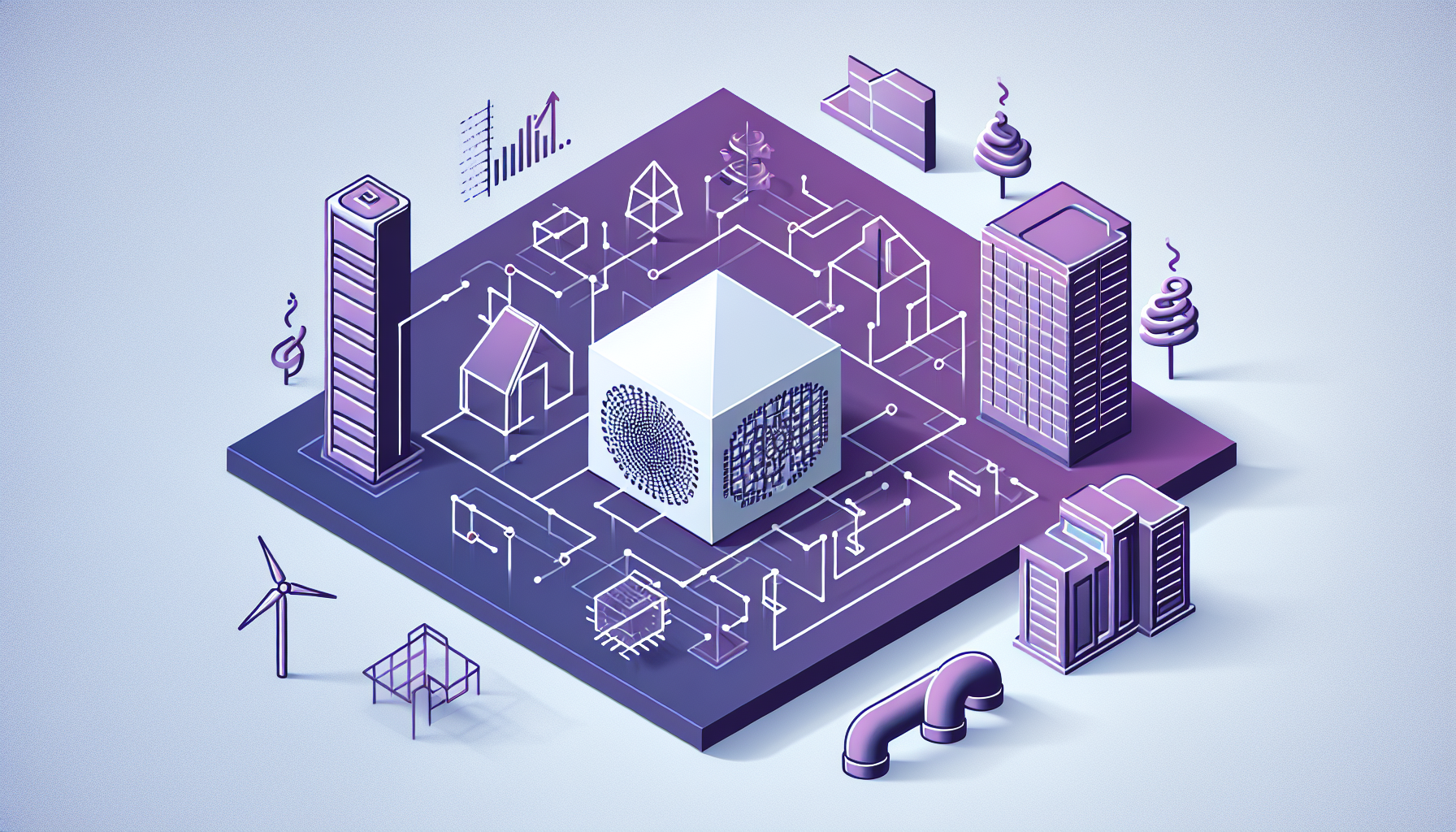To do a thorough energy analysis for LEED certification, use HVAC software. Start by making precise building models. Then, simulate how the HVAC system will work and tweak designs to meet LEED standards. This is key for making buildings that are sustainable and use less energy.
HVAC software is crucial for modeling building energy use. It lets you build digital versions of your projects. With these tools, you can check out different HVAC systems, guess energy use, and improve designs for LEED certification. Using this software, you can make spaces that are good for the planet.
With energy analysis from HVAC software, you can try out different designs and see how they affect energy use. This helps you make choices based on data. It supports LEED certification and saves energy and reduces harm to the environment over time. As you work on green building projects, learning to use these tools well is key to doing well.
Introduction to LEED Certification and Energy Analysis
The LEED certification process is changing the construction world. It’s a green building rating system that sets the bar for sustainable design and operation. Energy analysis is key in this process, making buildings work better and use less energy.
What is LEED Certification?
LEED certification is a worldwide sign of a building’s green efforts. It looks at six main areas:
- Site sustainability
- Water efficiency
- Energy and atmosphere
- Materials and resources
- Indoor environmental quality
- Innovation and design process
This focus leads to healthier, greener buildings.
Importance of Energy Analysis in Green Building Design
Energy analysis is crucial for green buildings. It spots areas to improve and checks energy code compliance. With detailed models, you can make buildings work better and cut costs.
Role of HVAC Software in Energy Modeling
HVAC software is key for precise energy modeling. It lets you test how a building will perform under different conditions, helping meet LEED standards. Energy efficiency experts often use these tools for the best advice.
| HVAC Software Feature | Benefit for LEED Certification |
|---|---|
| Building geometry modeling | Accurate structure representation |
| Weather data integration | Realistic performance forecasts |
| ASHRAE 90.1 compliance checks | Ensures energy code adherence |
| Energy consumption analysis | Finds areas for betterment |
Using these tools and methods makes getting LEED certification easier and builds sustainable structures.
Understanding LEED Energy and Atmosphere Prerequisites
LEED Energy and Atmosphere prerequisites are key to sustainable building design. They make sure buildings hit energy performance standards before getting more credits. Let’s dive into what these prerequisites are and why they matter for green building certification.
The LEED Energy and Atmosphere category aims to cut energy use and boost building efficiency. At its heart is EA Prerequisite 2: Minimum Energy Performance. This rule sets the energy efficiency bar for LEED-certified buildings.
To pass this prerequisite, your building must meet ASHRAE Standard 90.1-2004 or your local building code, whichever is tougher. This standard guides energy-efficient design in commercial buildings. It covers building envelope, lighting, and HVAC systems.
Showing you meet this prerequisite means doing energy simulations with approved software. These simulations check your building’s energy use against a baseline model. The baseline meets the minimum energy efficiency of ASHRAE Standard 90.1-2004.
| Prerequisite | Requirement | Compliance Method |
|---|---|---|
| EA Prerequisite 2 | Minimum Energy Performance | Energy simulation or prescriptive compliance |
| EA Credit 1 | Optimize Energy Performance | Energy simulation showing percentage improvement |
After hitting the minimum energy performance prerequisite, you can go for EA Credit 1: Optimize Energy Performance. This credit gives points for buildings that go beyond the baseline in energy efficiency.
By getting these LEED Energy and Atmosphere prerequisites, you’re setting the stage for buildings that are high-performance and energy-smart. These buildings help us move towards a sustainable future.
Selecting the Right HVAC Software for Energy Analysis
Choosing the right energy modeling software is key for accurate HVAC system optimization and LEED certification. The right software affects your energy analysis efficiency and your sustainable building project’s success.
Key Features to Look for in Energy Modeling Software
Look for these important features in sustainability software tools:
- Hourly energy use calculations
- Thermal mass effect modeling
- Multiple thermal zone simulation
- Part-load performance modeling of mechanical equipment
- Compliance with ASHRAE Standard 90.1-2004
Popular HVAC Software Options for LEED Certification
Here are some energy modeling software options for LEED certification projects:
| Software | Key Strengths | LEED Compatibility |
|---|---|---|
| TRACE 700 | User-friendly interface, comprehensive HVAC analysis | High |
| EnergyPlus | Advanced simulation capabilities, open-source | Excellent |
| DOE-2 | Widely accepted, extensive documentation | Very Good |
| HAP | Intuitive design, strong HVAC focus | Good |
Compatibility with ASHRAE Standards
Make sure your energy modeling software meets ASHRAE Standard 90.1-2004, Section 11, and Appendix G. This is crucial for precise energy analysis and LEED certification.
Choosing the right energy modeling software lays a strong foundation for your LEED certification. Think about your project’s needs and your team’s skills when deciding.
Gathering Essential Building Data for Energy Modeling
Collecting building data is key to precise energy performance analysis. You need detailed info on the building’s design and structure to begin. This info helps create a detailed digital model for optimizing HVAC systems.
Start by gathering floor plans, architectural blueprints, and insulation specs. These give you important details on the building’s layout and how well it stays warm or cool. Then, look into window and door specs. They affect how heat moves in and out, which is key for saving energy.
For energy modeling, you also need to know about HVAC systems. Collect info on the types of equipment, their size, and how well they work. Also, include details on ducts, vents, and how the systems are controlled. This info helps simulate how the building heats and cools.
- Building geometry and orientation
- Insulation values for walls, roof, and foundation
- Window and door specifications (U-value, SHGC)
- HVAC equipment details and efficiencies
- Lighting and appliance loads
- Building envelope air leakage rates
Don’t leave out info on lights, appliances, and other electric devices. They add heat inside and affect energy use. Also, get data on how air leaks in and out of the building. This is important for your energy model.
The more data you collect, the more precise your energy analysis will be. This careful planning helps make better decisions for HVAC design and optimization. It also supports your LEED certification goals.
Creating a Detailed Building Geometry Model
A precise building geometry model is key for effective energy analysis for LEED certification. With 3D building modeling, you can make a detailed digital copy of your project. This is the first step towards thorough energy simulations.
Importance of Accurate Building Representation
Your 3D model must show every part of the building’s structure. This includes walls, roofs, windows, and entrances. The size, shape, and position of these parts affect energy use. A detailed model gives you trustworthy results for LEED certification.
Incorporating Architectural Elements and Shading
Don’t forget how architectural features affect energy use. Add overhangs, sunshades, and other shading elements. These can greatly change solar heat gain and natural light. With them in your model, you’ll see how the building uses energy more clearly.
Zoning Considerations for Energy Analysis
Thermal zoning is key for detailed energy modeling. Split your building into zones by usage, occupancy, and HVAC needs. This method lets you analyze energy use better and find ways to save energy. Think about solar exposure and internal heat when setting up your zones.
By focusing on these important parts of 3D building modeling, you’re setting up a strong base for your LEED certification energy analysis. The more precise your model, the better your simulation results will be for improving your building’s energy use.
Defining HVAC System Parameters in the Software
You’re now setting up your HVAC system in your energy modeling software. This is key for a precise HVAC design and energy efficiency ratings. First, choose the type of HVAC system you have, like a VAV system, chiller plant, or heat pump.
Then, enter the efficiency ratings of your HVAC gear. This includes the Coefficient of Performance (COP) for cooling and the Annual Fuel Utilization Efficiency (AFUE) for heating. These numbers are crucial for your building’s energy use.

Next, set the temperature and humidity levels for comfort. Think about the different areas in your building and their needs. For instance, offices and server rooms might need different settings.
Remember to include air circulation and ventilation rates too. These affect the air quality and energy use inside. Enter the air changes per hour (ACH) for each area, following building codes and standards.
| HVAC Parameter | Typical Range | Impact on Energy Efficiency |
|---|---|---|
| Cooling COP | 2.5 – 4.0 | Higher COP means better efficiency |
| Heating AFUE | 80% – 98% | Higher AFUE means less fuel waste |
| Temperature Setpoint | 68°F – 76°F | Wider range can save energy |
| Ventilation Rate | 0.35 – 1.5 ACH | Lower rates reduce energy use but must meet codes |
By setting these HVAC parameters correctly, your energy model will mirror real-world performance. This leads to more accurate energy consumption predictions and potential savings.
Incorporating Weather Data and Occupancy Profiles
Getting LEED certification means using real-world factors in your HVAC software. Weather data and building occupancy are key to predicting energy use.
Sourcing Weather Data
First, gather reliable weather data for your area. This includes temperatures, humidity, and more. The National Oceanic and Atmospheric Administration (NOAA) has historical weather data for the U.S. Use this data in your software to see how the climate affects your building.
Creating Occupancy Schedules
Then, work on building occupancy modeling. Make detailed schedules that match your building’s typical use. Think about work hours, busy times, and changes with the seasons. For offices, this could mean more people from 9 AM to 5 PM on weekdays, fewer on weekends.
Accounting for Internal Heat Gains
Remember to include heat from people, lights, and machines. These add a lot to energy use. Figure out the heat from computers, printers, and other devices. Add in lighting and how much heat it gives off. Human body heat matters too, especially in crowded areas like meeting rooms.
With weather data, occupancy plans, and internal heat gains, you’ll get a precise energy model. This is crucial for LEED certification and designing efficient HVAC systems.
Conduct Energy Analysis for LEED Certification with Software
Running an energy simulation is key for LEED certification. You’ll use special software to figure out your building’s energy use in different situations. This helps you see how different things affect your building’s performance and spot areas to get better.

To begin the energy simulation, put in all the details about your building. This includes things like the building’s design, HVAC system, when people use it, and the local weather. The software will then make a virtual model of your building and simulate its energy use over time.
As the simulation goes, it figures out your building’s energy use for different systems:
- Heating and cooling
- Lighting
- Appliances and equipment
- Water heating
The software gives you detailed reports on energy use, showing how much energy you use every hour and how it changes with the seasons. These reports are key for checking how your building does in LEED energy performance and finding ways to use less energy.
Look closely at when your energy use is the highest and how it changes throughout the year. This info will help you make choices on how to save energy and meet LEED certification needs. The aim is to make your building as energy-efficient as possible without making it uncomfortable for people inside.
Analyzing Simulation Results and Optimizing HVAC Design
After running your energy simulations, it’s time to dive into the results. Energy consumption analysis is key to understanding how your building performs. You’ll want to look at overall energy use, peak demand periods, and specific system efficiencies.
Interpreting Energy Consumption Data
Break down the data by different building zones and systems. This helps pinpoint areas using more energy than expected. Look for patterns in energy use throughout the day and seasons. These insights guide your HVAC optimization strategies.
Identifying Areas for Improvement in HVAC Efficiency
With a clear picture of energy use, you can spot opportunities to boost efficiency. Maybe certain zones are overcooled, or equipment is running when it’s not needed. Consider adjusting setpoints, upgrading to more efficient units, or adding smart controls to match occupancy patterns.
Iterative Process for Design Refinement
HVAC design optimization is an ongoing process. Make changes based on your findings, then rerun simulations to see the impact. This iterative design process lets you fine-tune your system for maximum efficiency. Keep tweaking until you hit your energy goals and LEED certification targets.
Source Links
- https://www.eds.tech/a-comprehensive-guide-to-energy-modeling-and-simulation-for-hvac-design/
- https://www.trane.com/content/dam/Trane/Commercial/global/products-systems/education-training/engineers-newsletters/energy-environment/admapn015en_0505.pdf
- https://www.linkedin.com/pulse/step-by-step-guide-energy-modeling-simulation-hvac-design-hossain





0 Comments